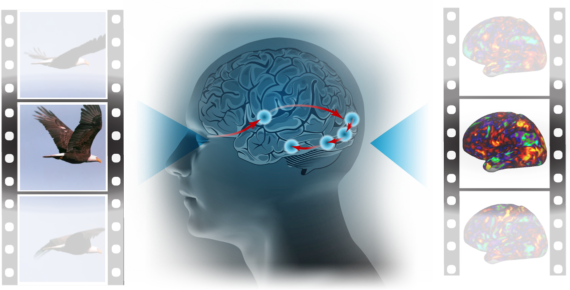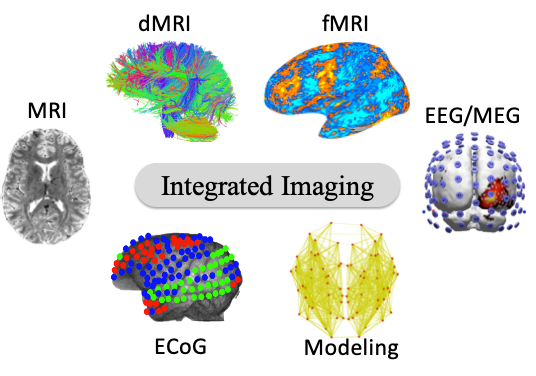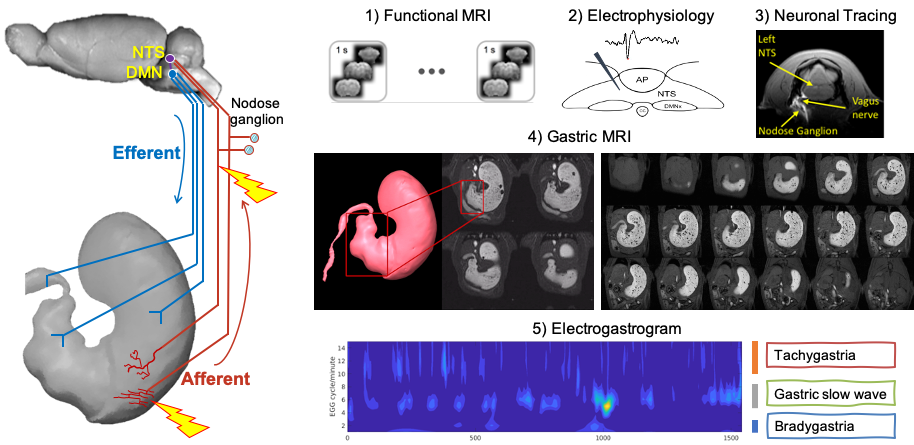Multimodal Neuroimaging
Mapping brain networks by combining functional and structural MRI, intracranial and scalp electroencephalography, and computational modeling. In humans and rodents, we use MRI to map the patterns of distributed brain networks, use electrophysiology to characterize the dynamics of network interactions, and use computational modeling to integrate the structure and dynamics of brain in order to understand neural computation and information processing across various behavioral and disease states.
Imaging-Guided Neuromodulation
Developing targeted control of brain and gastric functions through vagus nerve stimulation. The brain and the gut interact with one another in part through peripheral nerves. In rodents and humans, we use functional MRI and electrophysiology to characterize brain functions, gastric physiology, and gut-brain interactions. We further use peripheral nerve stimulation, e.g. vagus nerve stimulation, to modulate gut-brain interactions, as treatment to drug-refractory chronic conditions, e.g. gastroparesis.
Brain-inspired Artificial Intelligence

Developing brain-inspired deep-learning models for artificial intelligence and neuroscience. We use neuroscience knowledge or principles to design deep neural networks for artificial intelligence, e.g. computer vision and natural language processing. In turn we use deep neural networks, in combination of neural imaging and recordings, to study the brain and decode brain activity during natural perception and cognition.


